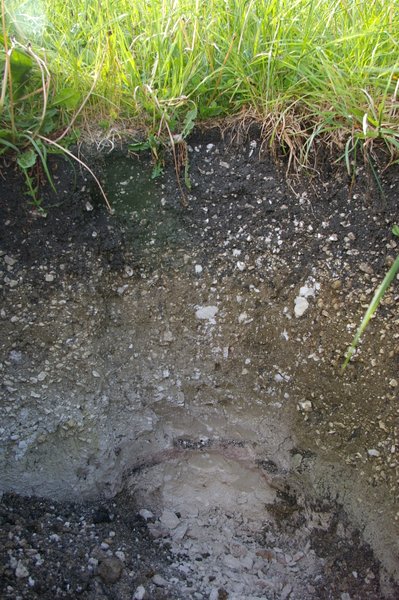|
North Canterbury and the Waipara Valley
A series on one of New Zealand's most interesting
wine regions: part 2, physical characteristics
.JPG)
If you look at the Waipara Valley’s
climate data, you’ll find that it is one of New Zealand’s coolest
wine regions, with GDDs of around 1090 (by way of comparison,
Marlborough is 1200, Martinborough is 1130 and Central Otago is
995). Springs are cool, but when summer kicks in it can be warm
here. The autumns are long and settled.
The valley is protected from the easterly
winds by the Teviotdale Hills. These easterly winds affect around
30% of summer days, and they are significant. (If the wind is from
the northwest it is warm everywhere, including down in Christchurch,
and if it's from the south, it's cold everywhere.) The result is
that the valley is 1–2 degrees warmer than Christchurch. Average
temperature in February is 17.7 °C, which is very similar to Nelson
and Central Otago. The southern alps act as a rain shadow, and so
rainfall here is quite low at 648 mm, with just 360 mm falling
during the growing season of October to April.
.JPG)
There are three main soil types in the
valley, which is reported as having the most
diverse soils of any of New Zealand's wine regions.
-
The first is the river terraces. The Waipara river, flowing
on an old glacier bed, formed north facing terraces which a lot of
the vineyards are planted on. It’s a bit like Martinborough, with a
thin layer of wind-blown loess sitting over free draining gravels.
-
Then there’s the valley floor, which has
a deep layer of clay over gravels, with some limestone-derived clays
in the eastern portion, and in the south gravelly loams over an
alluvial subsoil.
-
Finally, the hill slopes which are
limestone-derived clays: clays layered with fragmented limestone.
[For more
details, see this interesting soil map of the North
Canterbury region, with the location of vineyards marked.]

Waikari, the newest development of the
North Canterbury wine region, northwest of the Waipara Valley,
shares the protection from the easterlies and has a similar sort of
climate. The big difference here is that there’s quite a bit of
limestone in the soils here.

A soil pit at
Pyramid Valley, Waikari
[The North
Canterbury vineyard soils are the subject of academic study by Dr
Roland Harrison and Dr Philip Tonkin at Lincoln University. I'm
trying to find out more details about the results.]
Currently, there are 1462 hectares of
vineyards in North Canterbury, up from 853 in 2005, but shy of the
peak of 1809 in 2010 (data from NZ Winegrowers annual report 2014).
Main grape
varieties
|
Variety |
Hectares |
|
Pinot Noir |
334 |
|
Sauvignon Blanc |
346 |
|
Riesling |
280 |
|
Pinot Gris |
173 |
|
Chardonnay |
84 |
NORTH
CANTERBURY WINE REGION
 A historical perspective A historical perspective
 Physical features Physical features
 Alan
McCorkindale Alan
McCorkindale
 Black Estate Black Estate
 Bellbird
Spring Bellbird
Spring
 Pegasus
Bay Pegasus
Bay
 Mountford Mountford
 Bell
Hill Bell
Hill
 Pyramid
Valley Pyramid
Valley
 Fancrest Fancrest
 Bishops
Head Bishops
Head
 Casa
Leopardi Casa
Leopardi
 Greystone Greystone
 Mount
Brown Mount
Brown
 Muddy
Water Muddy
Water
 Tongue
in Groove Tongue
in Groove
 Terrace
Edge Terrace
Edge
 Waipara
Springs Waipara
Springs
 Waipara
West Waipara
West
 Waipara
Hills Waipara
Hills
Find these wines with wine-searcher.com
Back
to top
|

